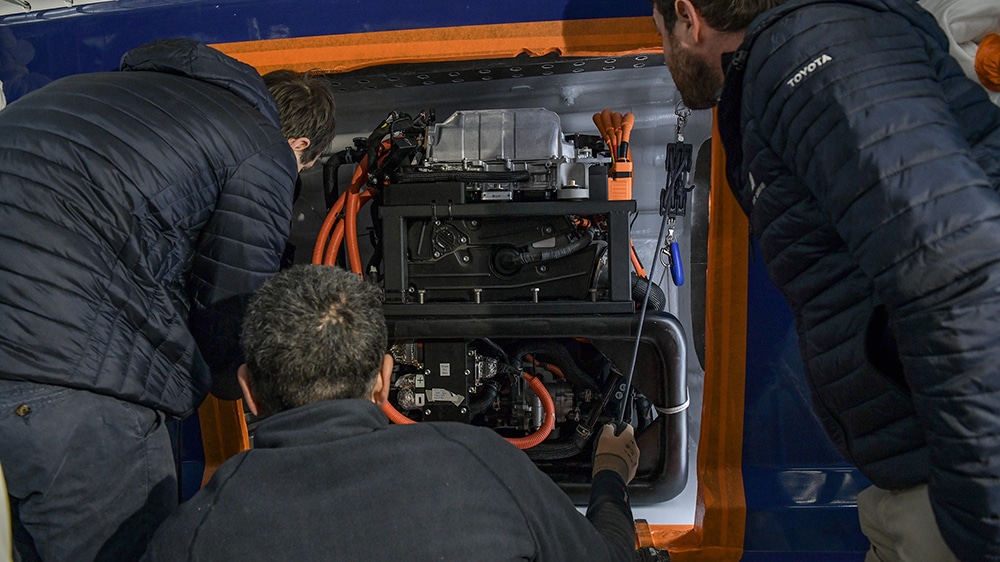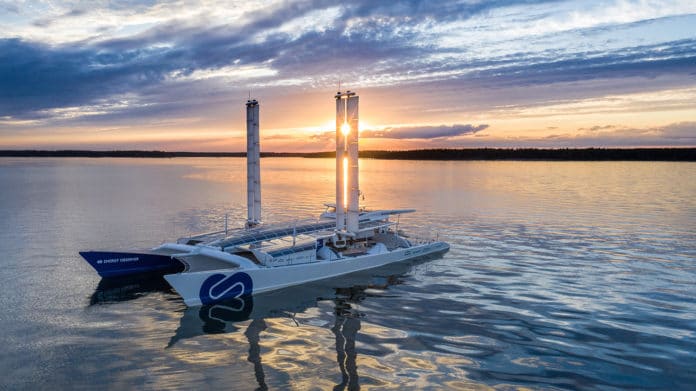Toyota, one of the car manufacturers that has been most committed to the cause of fuel cell mobility, has been involved in the Energy Observer project as hydrogen is at the “heart” of that boat on its exciting journey. Started in 2017, the six-year journey of the Energy Observer, the first energy-autonomous hydrogen vessel to travel worldwide, the team is unique.
The autonomous vessel, powered by the electric propulsion of the future, uses a set of renewable energies and an onboard system that produces hydrogen, carbon-free, from seawater. However, it has now joined the project in a more assertive way, since for the next phase of the journey, Energy Observer and Toyota are working together to introduce Toyota’s flagship fuel cell technology to the boat.
Thus, Toyota Technical Center Europe has developed the fuel cell system specifically for the vessel, using components first introduced in the Toyota Mirai, the world’s first mass-produced hydrogen fuel cell electric vehicle, and adapting a compact module suitable for marine applications.

The fuel cell will provide more power, efficiency, and reliability as its tour route includes crossing both the Atlantic and Pacific Oceans. The Toyota fuel cell system was designed to be a modular solution that can also be applied to trucks, buses, and for marine and stationary use.
Energy Observer is a former race boat that is 30,5 meters long, 12,80 meters wide, and weighs around 28 metric tons. It has a speed of around 8-10 knots.
With Toyota’s greater involvement in this maritime odyssey, the vessel also receives a technological innovation, since it is now completely autonomous, with the ability to extract hydrogen from the seawater itself.
In this sense, at the end of last year, the fuel cell module was tested on the boat at the shipyard. Currently, the final test of full power is being carried out on the high seas so that in mid-February, the Energy Observer, can move on to the next phase of its 2020 trip.
